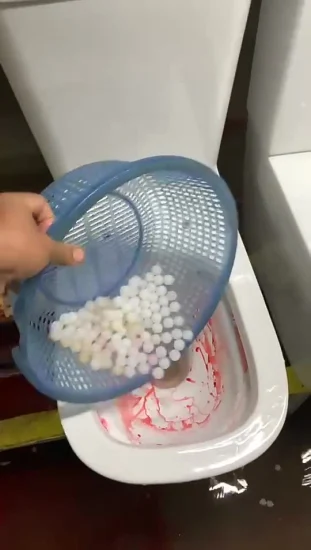Are You Permitted to Dispose of Food Waste in the Toilet?
Are You Permitted to Dispose of Food Waste in the Toilet?
Blog Article
Everyone may have their unique perception involving Think Twice Before Flushing Food Down Your Toilet.

Introduction
Many people are usually confronted with the issue of what to do with food waste, especially when it concerns leftovers or scraps. One usual question that arises is whether it's okay to flush food down the bathroom. In this article, we'll delve into the reasons people might think about flushing food, the repercussions of doing so, and alternate methods for proper disposal.
Reasons individuals may take into consideration purging food
Absence of awareness
Some individuals may not be aware of the prospective harm triggered by purging food down the commode. They might erroneously believe that it's a harmless method.
Ease
Purging food down the commode may feel like a quick and easy solution to getting rid of unwanted scraps, specifically when there's no close-by trash can offered.
Negligence
In some cases, individuals might just pick to flush food out of large idleness, without taking into consideration the consequences of their actions.
Effects of flushing food down the toilet
Environmental effect
Food waste that ends up in rivers can add to contamination and injury aquatic environments. Additionally, the water used to flush food can stress water resources.
Pipes concerns
Purging food can result in stopped up pipelines and drains, creating costly pipes fixings and aggravations.
Kinds of food that should not be purged
Coarse foods
Foods with coarse appearances such as celery or corn husks can get entangled in pipelines and create obstructions.
Starchy foods
Starchy foods like pasta and rice can absorb water and swell, bring about clogs in pipes.
Oils and fats
Greasy foods like bacon or food preparation oils ought to never ever be purged down the commode as they can solidify and trigger obstructions.
Appropriate disposal techniques for food waste
Utilizing a garbage disposal
For homes equipped with garbage disposals, food scraps can be ground up and purged via the pipes system. Nonetheless, not all foods are suitable for disposal in this fashion.
Recycling
Specific food packaging materials can be recycled, reducing waste and reducing environmental effect.
Composting
Composting is an eco-friendly means to throw away food waste. Organic materials can be composted and used to enrich dirt for gardening.
The relevance of proper waste administration
Reducing environmental injury
Proper waste monitoring practices, such as composting and recycling, aid minimize air pollution and preserve natural deposits for future generations.
Protecting plumbing systems
By preventing the technique of flushing food down the commode, homeowners can avoid pricey pipes fixings and preserve the honesty of their pipes systems.
Verdict
In conclusion, while it might be alluring to purge food down the bathroom for comfort, it is essential to understand the potential consequences of this action. By adopting correct waste monitoring methods and getting rid of food waste sensibly, individuals can contribute to much healthier pipes systems and a cleaner atmosphere for all.
FLUSH FOOD DOWN THE TOILET?
FLUSHING FOOD CAN CAUSE BLOCKED DRAINS IN YOUR HOME
All of the plumbing fixtures in your home are connected to the same sewer pipe outside of your home. This outdoor sewer pipe is responsible for transporting all the wastewater from your home to the Council sewer mains. Even small pieces of food that go down the kitchen sink can cause problems for your sewer. It should therefore be obvious that flushing larger bits of food, such as meat, risks a clog in either the toilet itself or the sewer pipes. Flushing greasy food is even more problematic because oil coagulates when it cools, coating the interior lining of your pipes.
THE TOILET IS NOT A BIN
Food isn’t the only thing that people shouldn’t be flushing down the toilet. People use the toilet to dispose of all kinds of things such as tampons, makeup wipes, dental floss, kitty litter and even underwear. Water goes to great lengths to educate residents about the high costs and stress placed on wastewater treatment systems simply from people flushing the wrong stuff down the toilet. It costs taxpayers millions of dollars each year, and homeowners thousands in blocked drain repairs.
FLUSHING FOOD IS A WASTE OF WATER
Flushing food is a waste of our most precious resource - water. In June this year Level 1 water restrictions were introduced to protect water supply from drought conditions. Much of New South Wales continues to be affected by prolonged drought with recent figures revealing up to 97 per cent of the state remains in drought. Depending on whether you have a single or dual flush toilet, every single flush uses between five and 11 litres of water. In the current climate this is a huge amount of water to be wasting on flushing food that should be placed in the bin (or better yet, the compost).
https://www.jabplumbingsolutions.com.au/blog/can-you-flush-food-down-the-toilet

We were made aware of that article on What Can Happen If You Flush Food Down the Toilet? through a pal on a different web property. For those who enjoyed our blog post kindly be sure to share it. Thanks a lot for going through it.
Try Here Report this page